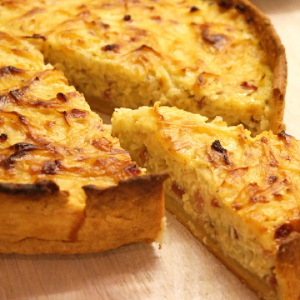Yesterday, we surveyed some of Germany’s best-known contributions to the dinner table – meaty mains and scrumptious potato and cabbage sides. Today, we’ll look at some of Germany’s lesser-known culinary gems – a side trip that will intrigue you!
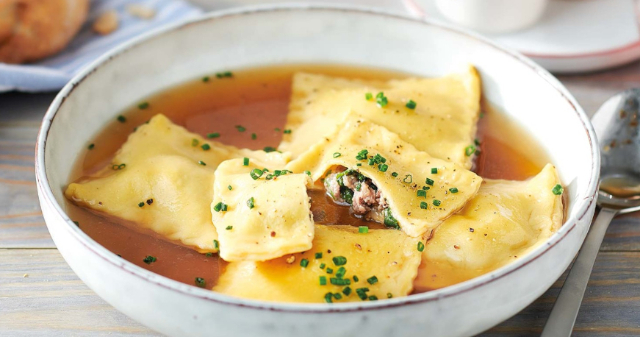 Maultaschen: Not exactly German Ravioli…
Maultaschen: Not exactly German Ravioli…
On our menu today
Maultaschen: At first glance, you’d think you were about to bite into a Ravioli pillow. But the stuffing for Maultaschen is generally composed of meat, spinach, bread crumbs, onions, herbs and spices. It’s one of a few German dishes that incorporates a pasta-like product (the shell). They’re commonly boiled, like Pierogis or Ravioli, and served in broth (as soup ‘dumplings’), or fried in butter with fried onions on top.
Jäegerschnitzel: We looks at the universal favourite, Wiener Schnitzel, yesterday. But even more favoured by Germans (perhaps preferred) is the classic Jäegerschnitzel (literally, ‘Hunter’s Schnitzel’) – a pork cutlet breaded and fried in the usual way. But it’s the Mushroom Gravy that makes it special!
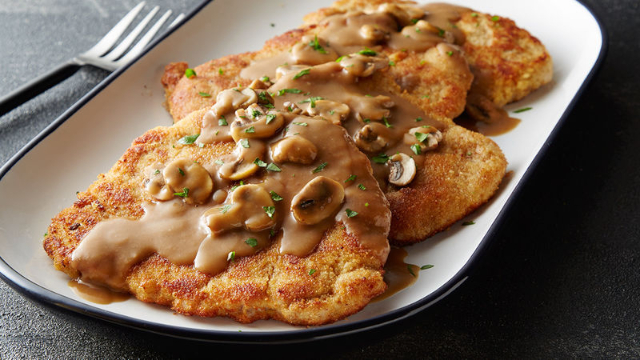
The gravy is fairly simple to whip up: just sizzle the onions until they become transparent, and add the mushrooms and continue cooking until they turn golden brown and all the liquid that usually comes out of them when cooking has evaporated. Add garlic, butter and flour. and cook until all the flour is coated with butter. Add Beef Broth, Thyme, salt and pepper. Whisk in and simmer for a few minutes, until the Gravy thickens. Simmer for 15 to 20 minutes more to ensure that the starchy flour flavour is cooked out. Serve with Späzele.
Kartoffelsuppe: Potato Soup. Along with the potatoes, you’ll need Suppergrün – a traditional blend of veggies including celery root, leeks, carrots and parsley – plus bacon, tomatoes, onions, garlic and a selection of herbs (which vary from recipe to recipe!). Kartoffelsuppe may be made with a clear broth, or creamy-style, depending on what part of Germany your recipe comes from. This is one of those dishes that actually taste better the next day, after the ingredients have had a chance to meld their flavours overnight. Make lots to ensure you’ll have leftovers!
Sauerkrautsuppe: This dish is popular in all corners of Germany, and each region adds its own little touches. But all German cooks agree, it’s basically a combination of sauerkraut, caramelized onions, paprika, bacon, onions, tomatoes and caraway seeds.
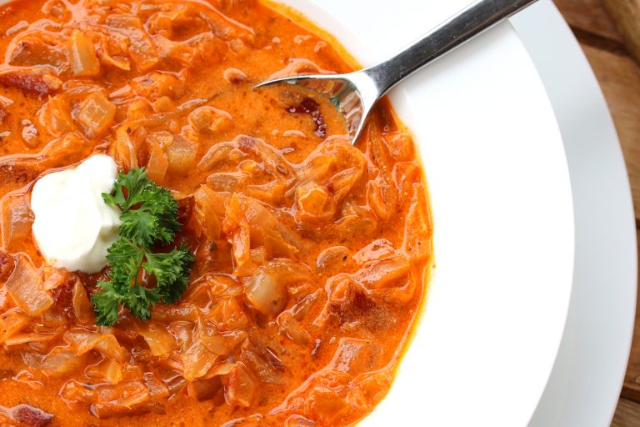
Serve with crème fraîche or sour cream (to be stirred in). All you need to make it a complete meal is fresh, crusty German Bread and a simple Green Salad.
Zwiebelkuchen: This Onion and Bacon pie is a classic fall dish (see photo, top of page). This is also another dish that’s enjoyed all over Germany, but differs in the details depending on the region you’re visiting. Some are thinner, like a French Tarte, and some are thicker, like a Quiche. The ‘crust’ is yeast-raised and is similar in some ways to Pizza Dough. The filling is deceptively simple: Caramelized Onions and Bacon in a creamy base (sour cream, flour, eggs and butter). To look at, you may think of Zwiebelkuchen as a German Quiche. But, believe me, it’s something very different – and delightful – once you cut into it!
Schwäbischer Kartoffelsalat: Authentic German Potato Salad! You’ve probably had a ‘German potato Salad’ at one time or another, when you were visiting someone with a taste for German food, or from a German Deli. But this recipe is straight from the author’s mom’s family cookbook and is touted as the real deal!
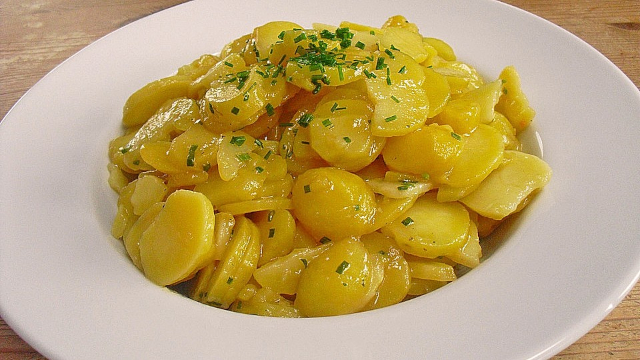
Success with your German Potato Salad will depend on several key elements: Use only yellow, waxy potatoes; only the best beef broth you can find; genuine mild German Mustard; plain white vinegar – not some fancy, flavoured deli type; and neutral-tasting oil, like Canola. You just boil the potatoes in their skins until fork tender, let cool, and then cut them into 1/4 in. / 1 cm slices. Place all the ‘dressing’ (broth) ingredients together and bring to the boil. Pour over the potatoes and cover. Let stand for at least an hour before serving.
Schwäbische Linsen: Looks and sounds like a vegetarian dish at first glance, but it DOES contain Beef Broth, butter and bacon. And the folks from Swabia, in Southern Germany where it comes from, say you can’t make proper Schwäbische Linsen without them.
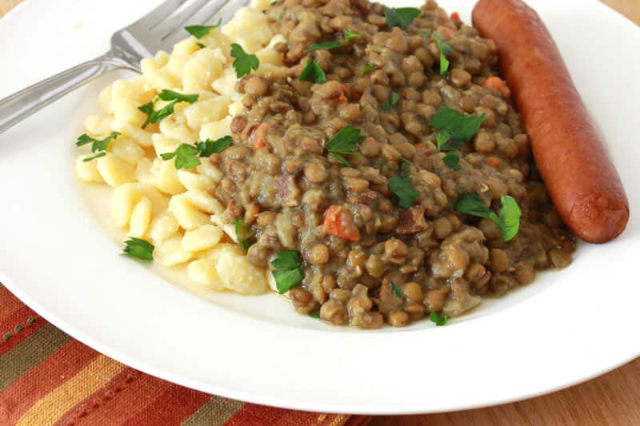
More a stew than a soup, this rich, creamy dish is based on Lentils (Linsen) and enhanced with onions, carrots, leeks, vinegar and herbs. You start with dried Lentils without soking them, so the dish requires slow simmering (for at least an hour) for the flavours to come together and the creamy sauce to form. Serve over Späezle topped with a German Sausage of your choice. Like many other German dishes, Schwäbische Linsen is said to be even better the next day (double or triple the recipe in your largest dutch oven!) and freezes perfectly.
Many thanks…
… To all the recipe websites and German ex-pats who have helped with this Expedition! Special thanks to The Daring Gourmet, a Southern German expat who provided details and ‘atmosphere’ on many of the dishes we surveyed yesterday and today. But don’t let that dissuade you from Googling ‘German Cuisine’ to your heart’s content. There’s a whole universe of German food out there we haven’t even thought of, yet!
Tomorrow, we’ll make one more sweep across Germany looking at the country’s really outstanding breads and deserts…
~ Maggie J.

